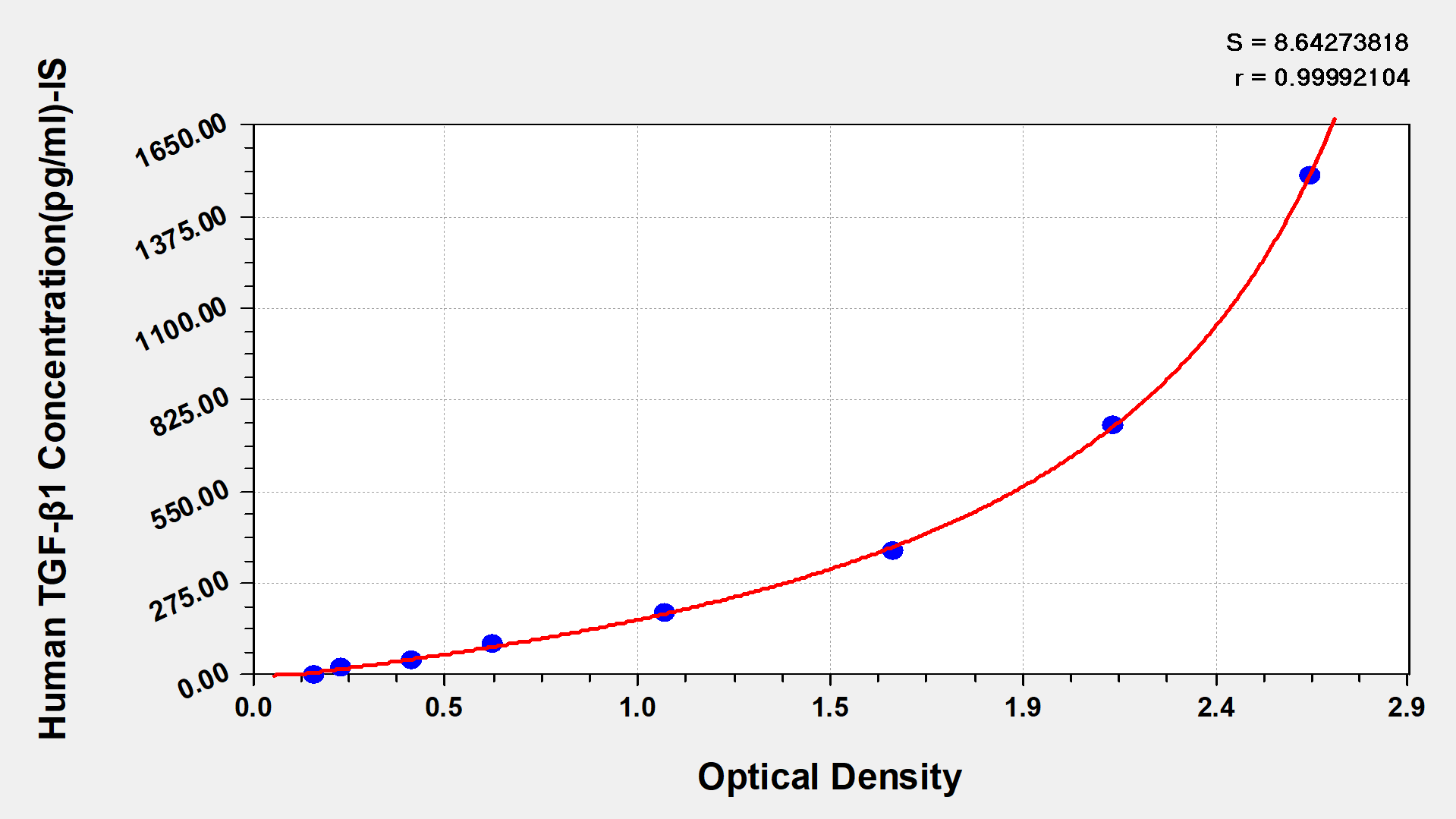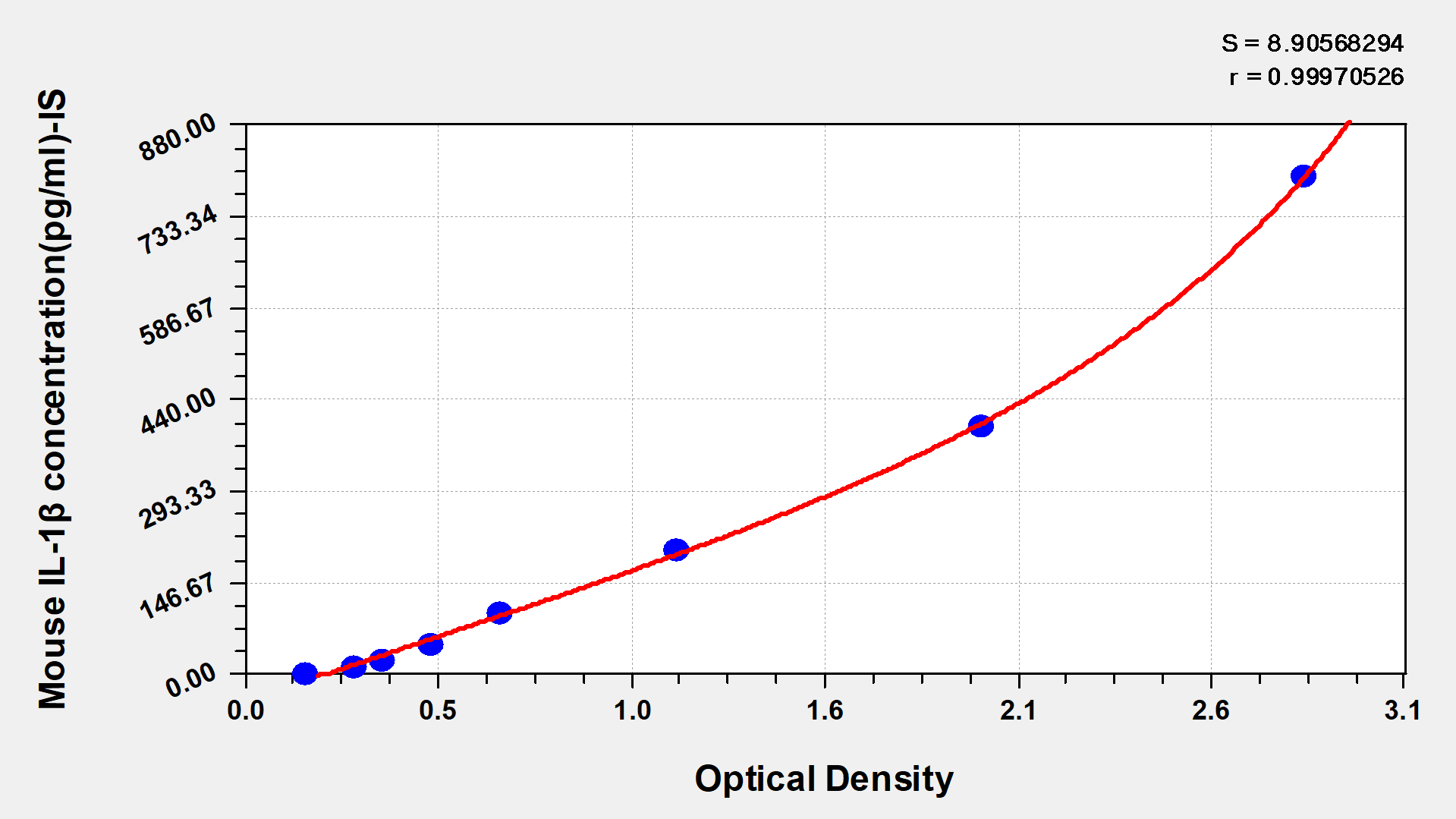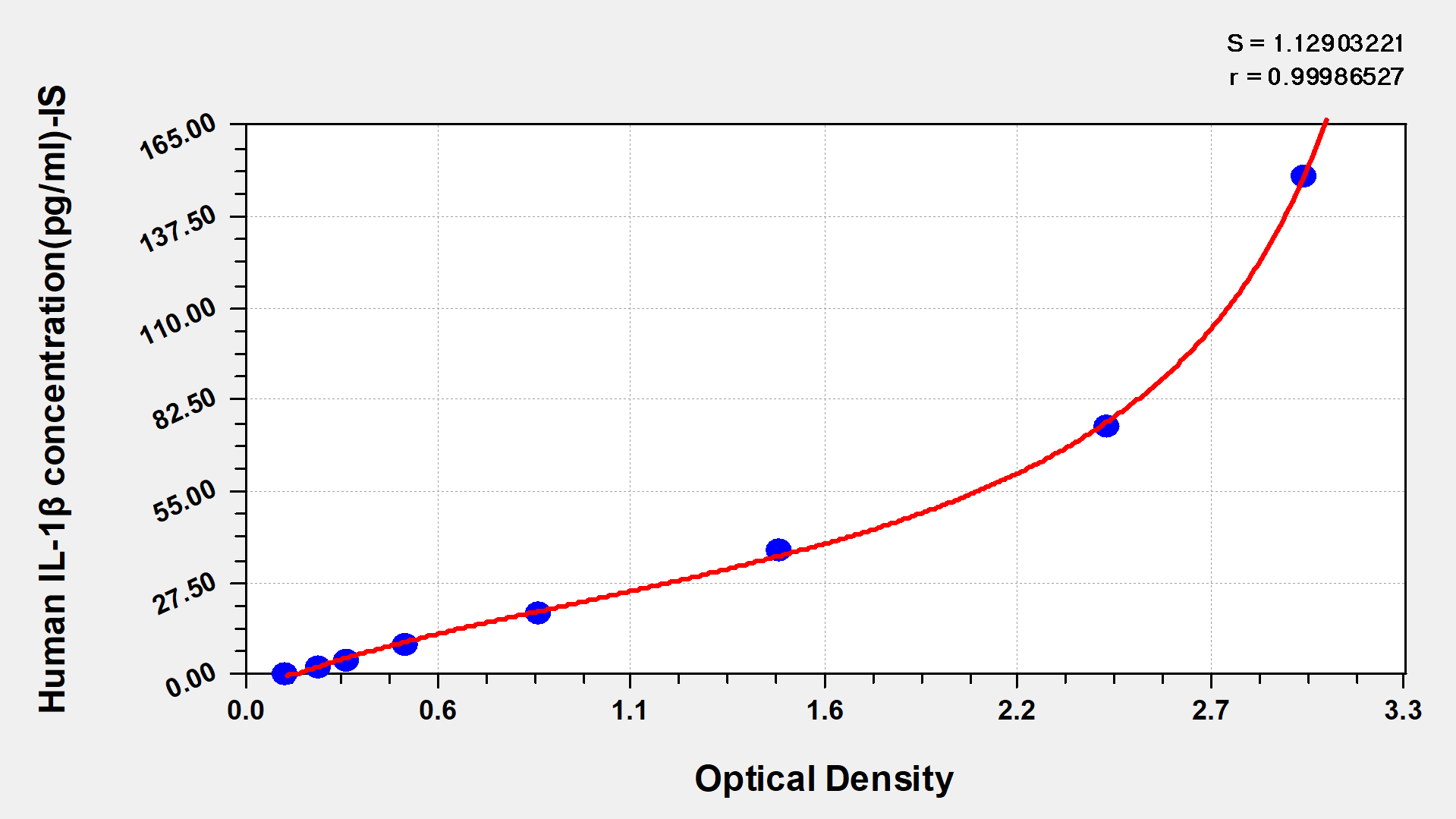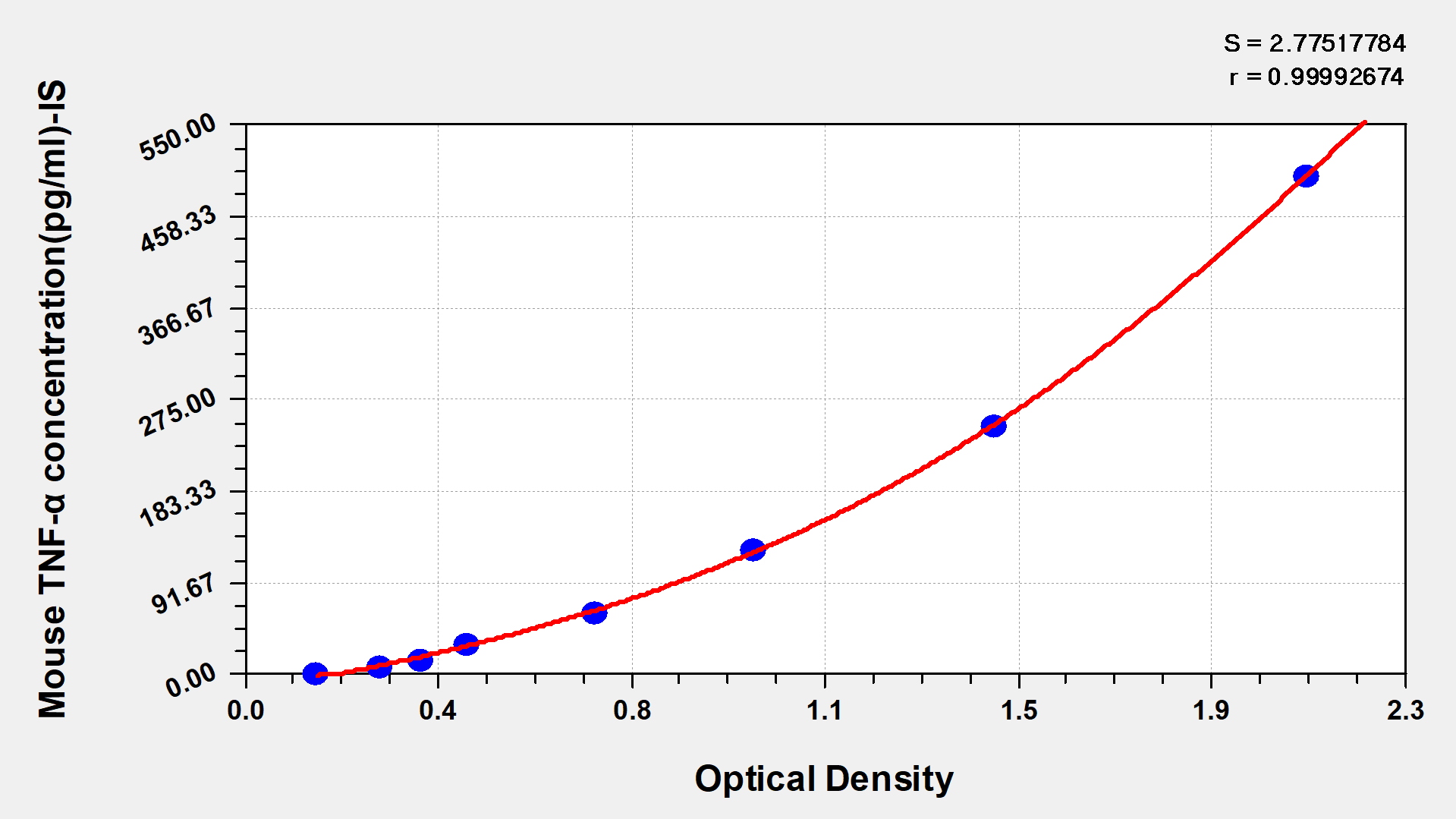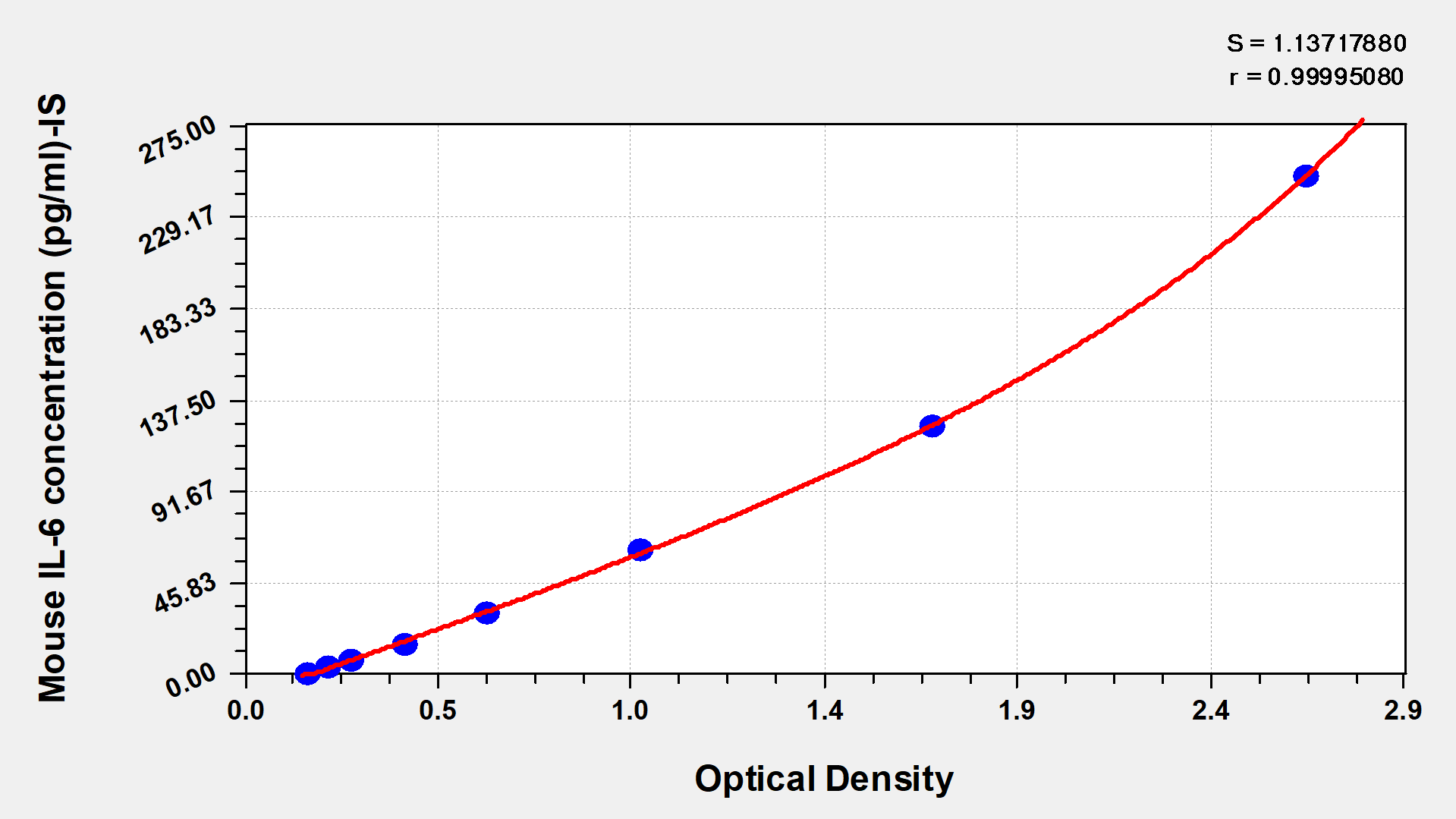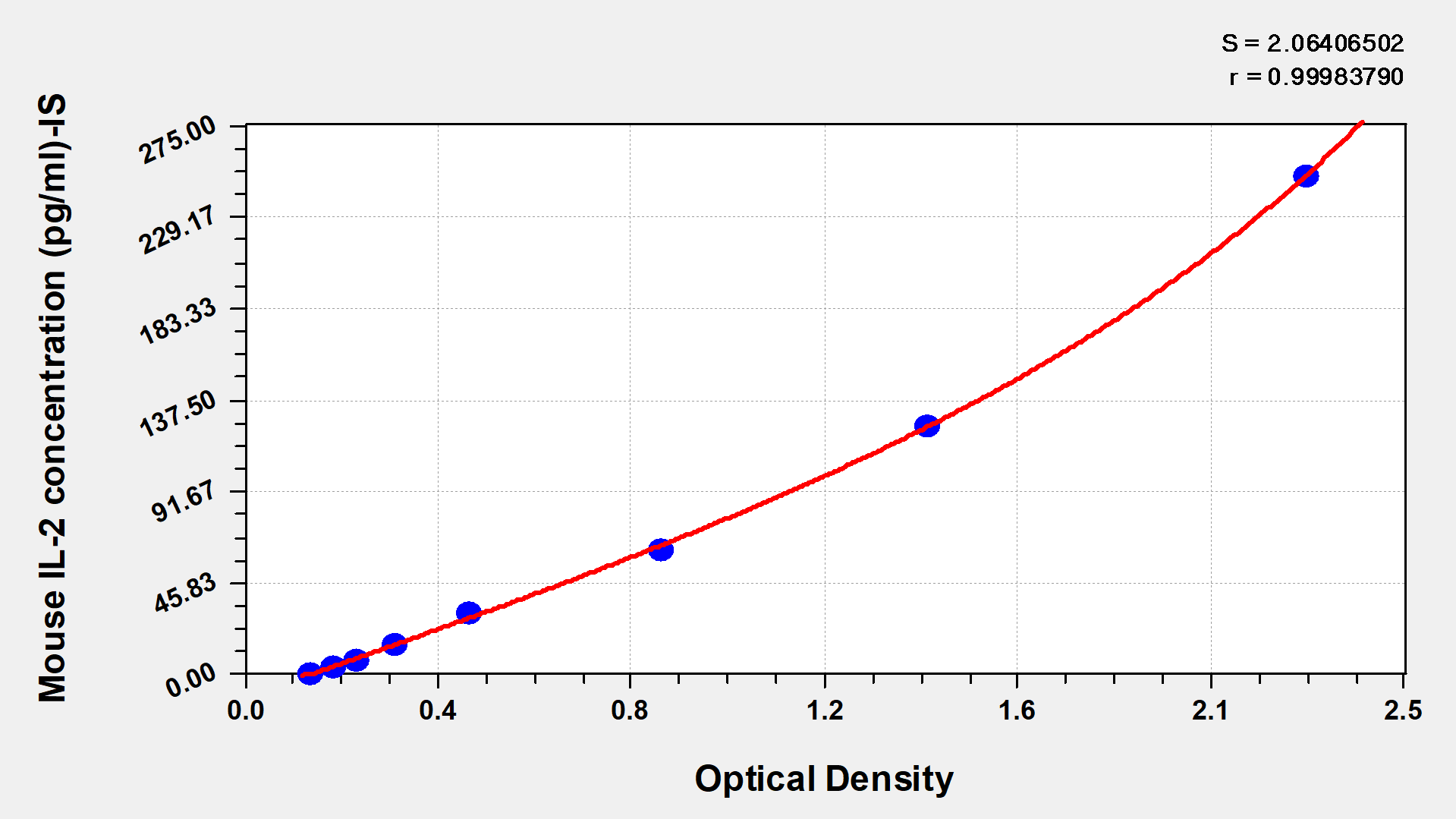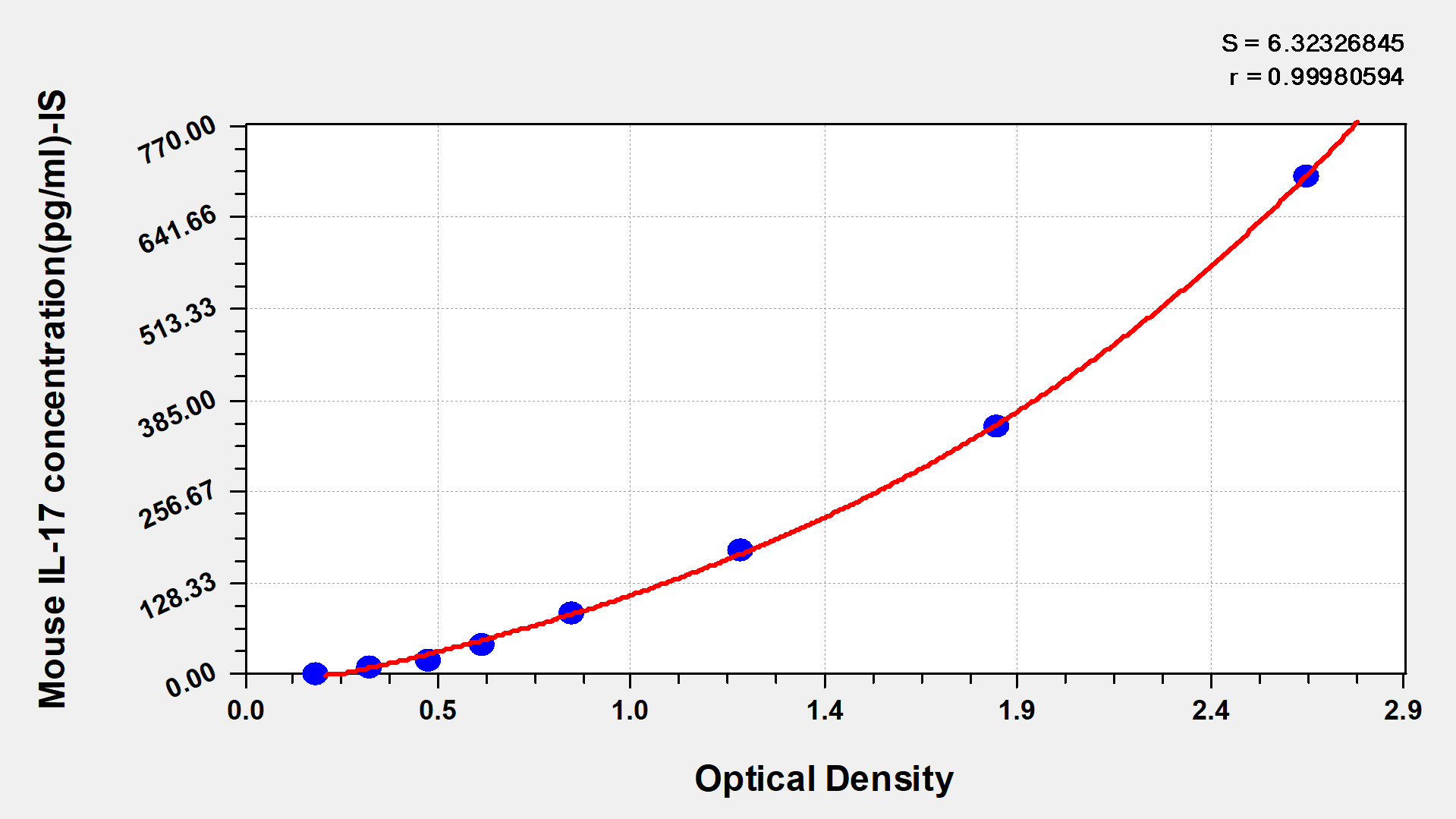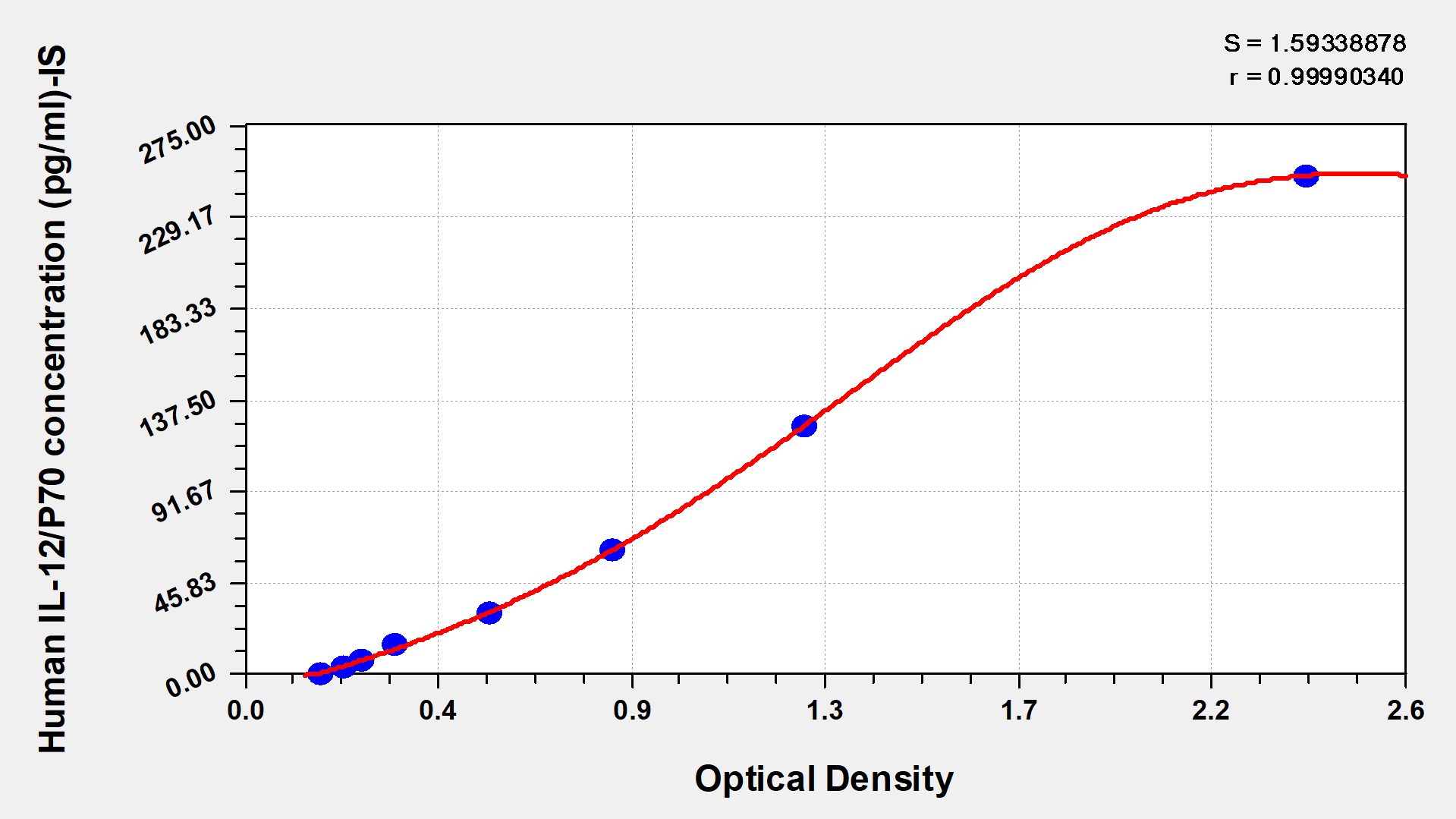-
中文名稱:豬高遷移率族蛋白B1(HMGB1)酶聯免疫試劑盒
-
貨號:CSB-EL010553PI
-
規格:96T/48T
-
價格:¥4200/¥3000
-
其他:
產品詳情
-
產品描述:豬高遷移率族蛋白B1(HMGB1)酶聯免疫試劑盒(CSB-EL010553PI)為雙抗夾心法ELISA試劑盒,定量檢測血清、血漿、組織勻漿樣本中的HMGB1含量。HMGB1(高遷移率族蛋白B1)是一種在哺乳動物細胞中高度保守的核蛋白,參與DNA損傷修復、基因轉錄、炎癥反應等生理和病理過程。其可通過細胞內外釋放,作為損傷相關分子模式(DAMPs)信號,調節炎癥、免疫、遷移等,并在多種疾病中發揮重要作用。研究HMGB1的機制有助于開發新的治療策略。試劑盒檢測范圍為0.312 ng/mL-20 ng/mL,適用于實驗動物模型中的炎癥性疾病研究、組織損傷修復機制探索,以及敗血癥、自身免疫疾病等病理過程中HMGB1的動態監測本品僅用于科研,不用于臨床診斷,產品具體參數及操作步驟詳見產品說明書。
-
別名:HMGB1 ELISA Kit; HMG1High mobility group protein B1 ELISA Kit; High mobility group protein 1 ELISA Kit; HMG-1 ELISA Kit
-
縮寫:
-
Uniprot No.:
-
種屬:Sus scrofa (Pig)
-
樣本類型:serum, plasma, tissue homogenates
-
檢測范圍:0.312 ng/mL-20 ng/mL
-
靈敏度:0.078 ng/mL
-
反應時間:1-5h
-
樣本體積:50-100ul
-
檢測波長:450 nm
-
研究領域:Epigenetics and Nuclear Signaling
-
測定原理:quantitative
-
測定方法:Sandwich
-
精密度:
Intra-assay Precision (Precision within an assay): CV%<8% Three samples of known concentration were tested twenty times on one plate to assess. Inter-assay Precision (Precision between assays): CV%<10% Three samples of known concentration were tested in twenty assays to assess. -
線性度:
To assess the linearity of the assay, samples were spiked with high concentrations of pig HMGB1 in various matrices and diluted with the Sample Diluent to produce samples with values within the dynamic range of the assay. Sample Serum(n=4) 1:5 Average % 94 Range % 90-98 1:10 Average % 104 Range % 100-108 1:20 Average % 87 Range % 84-91 1:40 Average % 93 Range % 90-96 -
回收率:
The recovery of pig HMGB1 spiked to levels throughout the range of the assay in various matrices was evaluated. Samples were diluted prior to assay as directed in the Sample Preparation section. Sample Type Average % Recovery Range Serum (n=5) 95 89-98 EDTA plasma (n=4) 93 87-99 -
標準曲線:
These standard curves are provided for demonstration only. A standard curve should be generated for each set of samples assayed. 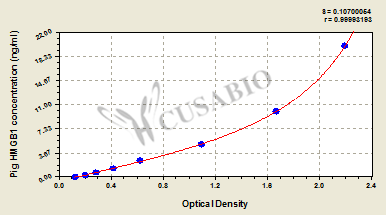
ng/ml OD1 OD2 Average Corrected 20 2.142 2.165 2.154 2.020 10 1.634 1.645 1.640 1.506 5 1.098 1.057 1.078 0.944 2.5 0.635 0.601 0.618 0.484 1.25 0.431 0.412 0.422 0.288 0.625 0.298 0.285 0.292 0.158 0.312 0.211 0.215 0.213 0.079 0 0.135 0.133 0.134 -
數據處理:
-
貨期:3-5 working days
引用文獻
- Necroptosis is active and contributes to intestinal injury in a piglet model with lipopolysaccharide challenge Y Liu,Cell Death & Disease,2021
- Haemoadsorption reduces the inflammatory response and improves blood flow during ex vivo renal perfusion in an experimental model Sarah A.et al,journal of translational medicine,2017
- Identification of some plasma biomarkers associated with early weaning stress in crossbred piglets U. K. De.et al,Springer London,2016
相關產品
靶點詳情
-
功能:Multifunctional redox sensitive protein with various roles in different cellular compartments. In the nucleus is one of the major chromatin-associated non-histone proteins and acts as a DNA chaperone involved in replication, transcription, chromatin remodeling, V(D)J recombination, DNA repair and genome stability. Proposed to be an universal biosensor for nucleic acids. Promotes host inflammatory response to sterile and infectious signals and is involved in the coordination and integration of innate and adaptive immune responses. In the cytoplasm functions as sensor and/or chaperone for immunogenic nucleic acids implicating the activation of TLR9-mediated immune responses, and mediates autophagy. Acts as danger associated molecular pattern (DAMP) molecule that amplifies immune responses during tissue injury. Released to the extracellular environment can bind DNA, nucleosomes, IL-1 beta, CXCL12, AGER isoform 2/sRAGE, lipopolysaccharide (LPS) and lipoteichoic acid (LTA), and activates cells through engagement of multiple surface receptors. In the extracellular compartment fully reduced HMGB1 (released by necrosis) acts as a chemokine, disulfide HMGB1 (actively secreted) as a cytokine, and sulfonyl HMGB1 (released from apoptotic cells) promotes immunological tolerance. Has proangiogenic activity. May be involved in platelet activation. Binds to phosphatidylserine and phosphatidylethanolamide. Bound to RAGE mediates signaling for neuronal outgrowth. May play a role in accumulation of expanded polyglutamine (polyQ) proteins.; Nuclear functions are attributed to fully reduced HGMB1. Associates with chromatin and binds DNA with a preference to non-canonical DNA structures such as single-stranded DNA, DNA-containing cruciforms or bent structures, supercoiled DNA and ZDNA. Can bent DNA and enhance DNA flexibility by looping thus providing a mechanism to promote activities on various gene promoters by enhancing transcription factor binding and/or bringing distant regulatory sequences into close proximity. May be involved in nucleotide excision repair (NER), mismatch repair (MMR) and base excision repair (BER) pathways, and double strand break repair such as non-homologous end joining (NHEJ). Involved in V(D)J recombination by acting as a cofactor of the RAG complex: acts by stimulating cleavage and RAG protein binding at the 23 bp spacer of conserved recombination signal sequences (RSS). In vitro can displace histone H1 from highly bent DNA. Can restructure the canonical nucleosome leading to relaxation of structural constraints for transcription factor-binding. Enhances binding of sterol regulatory element-binding proteins (SREBPs) such as SREBF1 to their cognate DNA sequences and increases their transcriptional activities. Facilitates binding of TP53 to DNA. May be involved in mitochondrial quality control and autophagy in a transcription-dependent fashion implicating HSPB1. Can modulate the activity of the telomerase complex and may be involved in telomere maintenance.; In the cytoplasm proposed to dissociate the BECN1:BCL2 complex via competitive interaction with BECN1 leading to autophagy activation. Can protect BECN1 and ATG5 from calpain-mediated cleavage and thus proposed to control their proautophagic and proapoptotic functions and to regulate the extent and severity of inflammation-associated cellular injury. In myeloid cells has a protective role against endotoxemia and bacterial infection by promoting autophagy. Involved in endosomal translocation and activation of TLR9 in response to CpG-DNA in macrophages.; In the extracellular compartment (following either active secretion or passive release) involved in regulation of the inflammatory response. Fully reduced HGMB1 (which subsequently gets oxidized after release) in association with CXCL12 mediates the recruitment of inflammatory cells during the initial phase of tissue injury; the CXCL12:HMGB1 complex triggers CXCR4 homodimerization. Induces the migration of monocyte-derived immature dendritic cells and seems to regulate adhesive and migratory functions of neutrophils implicating AGER/RAGE and ITGAM. Can bind to various types of DNA and RNA including microbial unmethylated CpG-DNA to enhance the innate immune response to nucleic acids. Proposed to act in promiscuous DNA/RNA sensing which cooperates with subsequent discriminative sensing by specific pattern recognition receptors. Promotes extracellular DNA-induced AIM2 inflammasome activation implicating AGER/RAGE. Disulfide HMGB1 binds to transmembrane receptors, such as AGER/RAGE, TLR2, TLR4 and probably TREM1, thus activating their signal transduction pathways. Mediates the release of cytokines/chemokines such as TNF, IL-1, IL-6, IL-8, CCL2, CCL3, CCL4 and CXCL10. Promotes secretion of interferon-gamma by macrophage-stimulated natural killer (NK) cells in concert with other cytokines like IL-2 or IL-12. TLR4 is proposed to be the primary receptor promoting macrophage activation and signaling through TLR4 seems to implicate LY96/MD-2. In bacterial LPS- or LTA-mediated inflammatory responses binds to the endotoxins and transfers them to CD14 for signaling to the respective TLR4:LY96 and TLR2 complexes. Contributes to tumor proliferation by association with ACER/RAGE. Can bind to IL1-beta and signals through the IL1R1:IL1RAP receptor complex. Binding to class A CpG activates cytokine production in plasmacytoid dendritic cells implicating TLR9, MYD88 and AGER/RAGE and can activate autoreactive B cells. Via HMGB1-containing chromatin immune complexes may also promote B cell responses to endogenous TLR9 ligands through a B-cell receptor (BCR)-dependent and ACER/RAGE-independent mechanism. Inhibits phagocytosis of apoptotic cells by macrophages; the function is dependent on poly-ADP-ribosylation and involves binding to phosphatidylserine on the cell surface of apoptotic cells. In adaptive immunity may be involved in enhancing immunity through activation of effector T cells and suppression of regulatory T (TReg) cells. In contrast, without implicating effector or regulatory T-cells, required for tumor infiltration and activation of T-cells expressing the lymphotoxin LTA:LTB heterotrimer thus promoting tumor malignant progression. Also reported to limit proliferation of T-cells. Released HMGB1:nucleosome complexes formed during apoptosis can signal through TLR2 to induce cytokine production. Involved in induction of immunological tolerance by apoptotic cells; its pro-inflammatory activities when released by apoptotic cells are neutralized by reactive oxygen species (ROS)-dependent oxidation specifically on Cys-106. During macrophage activation by activated lymphocyte-derived self apoptotic DNA (ALD-DNA) promotes recruitment of ALD-DNA to endosomes.
-
基因功能參考文獻:
- Systemic HMGB-1 levels were significantly elevated in both trauma groups when compared to the sham group. Haemorrhagic shock severity and duration were positively correlated with HMGB-1 levels and compared to baseline values, concentrations remained significantly increased in severe hemorrhage when compared to moderate hemorrhage. PMID: 26038024
- high levels of HMGB1 in the small intestine and its relation to high levels of HMGB1 in plasma of piglets infected with E. coli O55 that suffered from infection correlated with high levels of inflammatory cytokines and bacterial translocation; levels were higher than HMGB1 levels in piglets with mild clinical symptoms PMID: 22902066
- HMGB-1 may participate in the inflammatory response and liver injury in the late stage of acute liver failure PMID: 18278457
-
亞細胞定位:Nucleus. Chromosome. Cytoplasm. Secreted. Cell membrane; Peripheral membrane protein; Extracellular side. Endosome. Endoplasmic reticulum-Golgi intermediate compartment.
-
蛋白家族:HMGB family
-
數據庫鏈接:
Most popular with customers
-
Human Transforming Growth factor β1,TGF-β1 ELISA kit
Detect Range: 23.5 pg/ml-1500 pg/ml
Sensitivity: 5.8 pg/ml
-
-
-
Mouse Tumor necrosis factor α,TNF-α ELISA Kit
Detect Range: 7.8 pg/ml-500 pg/ml
Sensitivity: 1.95 pg/ml
-
-
-
-



